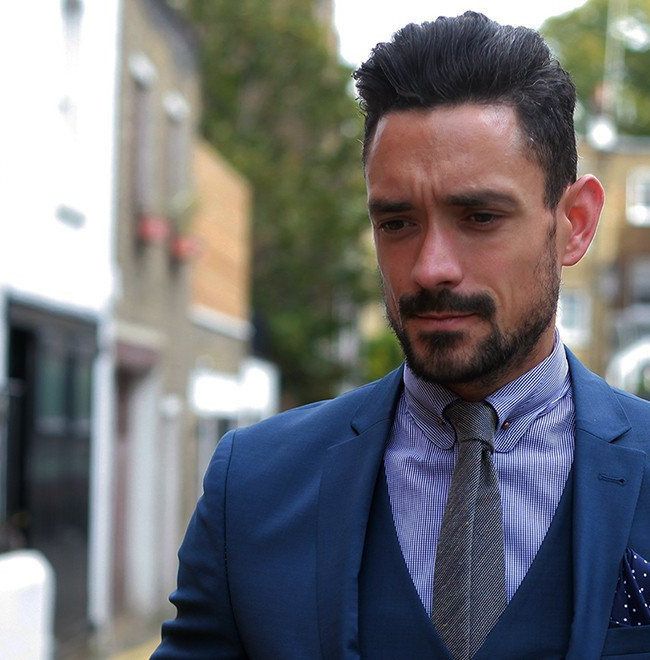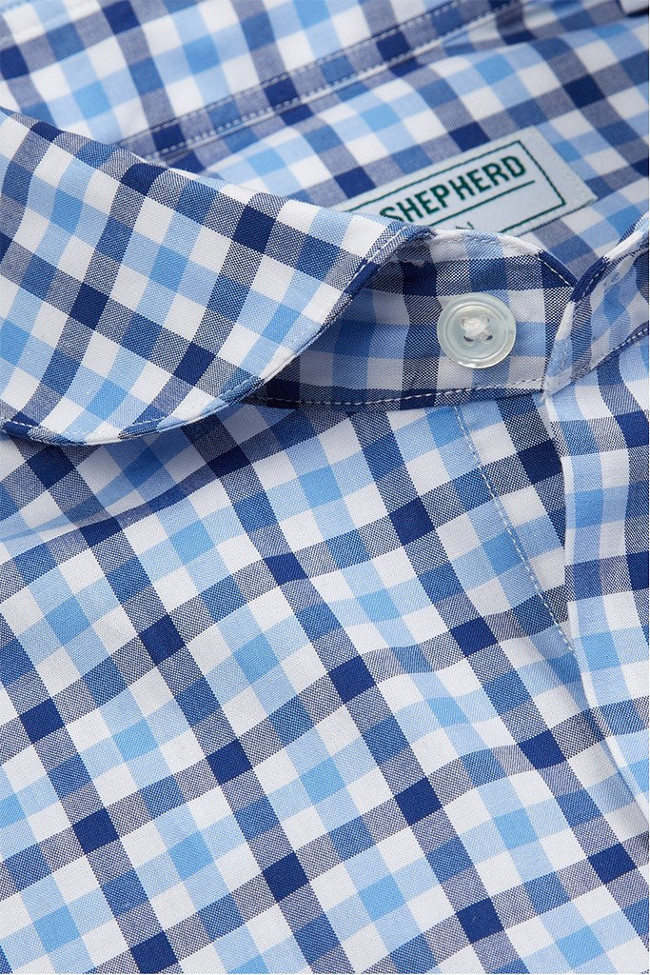Men’s style and fashion expert Carl Thompson (founder of Hawkins & Shepherd) looks at what makes a great men’s shirt.
It’s a question that has dogged man since dogging was a thing. That doesn’t sound quite right but we’ll move on.
Firstly, as a shirtmaker myself I find myself being the unelected salient of secrets when it comes to the quality of men’s shirts.
Firstly, let me assure you that I’m not! There are far better writers, historians and of course shirt makers that have all served more time in the trenches of shirt making than I.
However, I have experience. I have opinions based on experience and here are some pearls of wisdom (mother of pearls if you will) that I would like to parlay onto you.

How important is fabric?
Let’s start with the big one. Believe it or not it’s not as big as you might think. What is important are the conditions in which you’ll be wearing your shirt.
A densely woven, low yarn count fabric will be of no use to you in hot Asian climates. Singapore for example, fast becoming one of the business capitals of the world and you’ll be hard pressed to find any man in anything other than a breathable weave (such as poplin), light cotton or linen blend shirts.
Conversely you want to make sure the fabric isn’t made of synthetic fabric as it will not circumvent body heat and once sweat is trapped, the smell will be harder to wash off. A shirt that is light and has breathable fabric is the best. If in doubt as a basic rule, I would say that a 2/2×100 yarn count is the sign of a decent quality fabric, go upwards to 2/2x140s and you’ll get a super fine feel and go downwards to a 2/2x60s fabric and you’ll heading towards a lower quality, heavy dense shirt.
I’m assuming the fit of a good shirt is key?
Correctomundo! Not everyone is blessed with a perfect block figure that is conducive to ready to wear/ off the peg shirts.
A good fit can be felt as well as seen. How does is drape around the ribcage and hang off the shoulders? Can you move around in the shirt easily? Can you raise your arm freely without constraint, and when you sit down do you have enough fabric length so that the shirt stays tucked in? The key to any well fitted shirt is the yolke (the piece of fabric around the shoulder area) as every other part of the shirt pattern is attached to this small piece of fabric, get this wrong, you’ll get the fit wrong. Top tip: If you are between sizes always go up a size and make sure your shoulders fit well, as any tailor from your local dry cleaner can easily add darts to the back of the shirt which brings in the waist/chest and then you can always shorten the arms if needs be.
If you’re going for a made to measure shirt, then a decent shirt maker will be asking you these questions.
What indicates a good fit?
A decent fit will have a very natural, unfloundering finish. I.E if it looks like a man is fighting his shirt, or conversely, it’s not fitted to his body shape then it’s probably a ready to wear shirt that he has purchased and thought ‘that’ll do’.
This is not the case with all ready to wear shirts. Our Hawkins & Shepherd ready to wear shirts are eviscerating this ‘close enough’ rhetoric that men have adopted over generations.

How?
Not just on my designs but on any shirt you purchase you should look for some of the following details to help you get a better fitting shirt.
The last buttonhole on the placket front should be executed and applied horizontally for extra movement. A separate gusset to the hem will provide support so the hem won’t dog-end or pull heavily on the bias.
Two darts at the back of the shirt create a full shoulder and a slimmer silhouette around the waist. A four piece broken or split bias is cut on the bias for a smooth fit over the shoulders. This is also a classic look.
Ensure the collar stays reach the tip of the collar, ensuring the collar tips are crisp. Plastic ones are fine but aluminium alloy collar stays give a gentle curve which some prefer.
Talking of crisp appearances, all Hawkins & Shepherd shirts come with a light fusing. Optional cuff styling is available, two button barrel with mitered edge, two mutton barrel with rounded edge, there is also a two button adjustable depending on your wrist size.
Carl tell me about the collars?
The collars are down to personal preference. No prizes in guessing that my heart is in pin tab collars. A good shirt will have a nice natural rounded finish to the collar and sleeve. The close edge stitching is more often a sign of quality as it’s harder to achieve.
Our casual button down shirts have 1/4 edge stitching but all shirts will have a light top fusing. Most collars that fused entirely will appear boxy and unflattering.

Ultimately it’s quality you should be looking for
And this is where it gets a little tricky. For example, mother of pearl buttons is nice, and certainly preferable to plastic, but how they’re fastened to the garment and where they’re sourced is another matter entirely. Turnbull & Asser shirts for example, guarantee their buttons never come off.
And don’t forget!
To look after them well. No dry cleaning unless the shirts are of disposable quality. No tumble drying. Having a wardrobe replete with shirts will enable you to rotate efficiently.






















